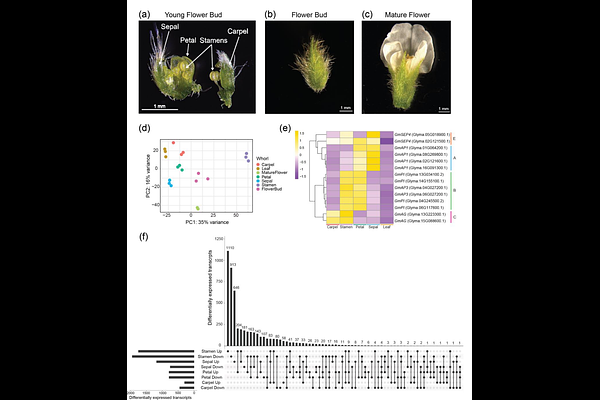Redesigning petal shape, size, and color in soybean reveals unexpected phenotypes for floral organ development

Redesigning petal shape, size, and color in soybean reveals unexpected phenotypes for floral organ development
Szeluga, N.; AlBader, N.; Pelletier, S.; Weis, K.; Johnson, A.; Fahlgren, N.; Neequaye, M.; Vogt, G.; DelPercio, R.; Baldrich, P.; Byers, K. J. R. P.; Meyers, B. C.; Frank, M.
AbstractSoybean (Glycine max) has not yet benefited from large-scale hybrid breeding efforts due to its small, self-fertilizing flowers that are difficult to emasculate and limited attractiveness to pollinators. This study explores targeted floral trait engineering to enhance pollinator attraction, aiming to overcome barriers to soybean hybridization. We generated a high-resolution floral organ expression atlas and H3K4 trimethylation ChIP-Seq dataset to identify candidate genes involved in petal development, nectar sugar content, and petal pigmentation. Using CRISPR-based activation and repression systems, we modified the expression of AINTEGUMENTA (GmANT), BIGPETAL (GmBPE), and SUCROSE TRANSPORTER2 (GmSUC2). Contrary to expectations based on Arabidopsis homologs, transcriptional activation of GmANT_B and repression of GmBPE led to reduced, rather than increased, petal size, highlighting divergent regulatory mechanisms in soybean. Complementation of the W1 gene that controls petal pigmentation successfully converted white petals to purple, with preliminary evidence indicating that this color conversion may increase pollinator visitation. These results underscore the complexity of floral development in soybean and provide foundational tools and resources for future efforts to engineer reproductive traits for hybrid seed production.